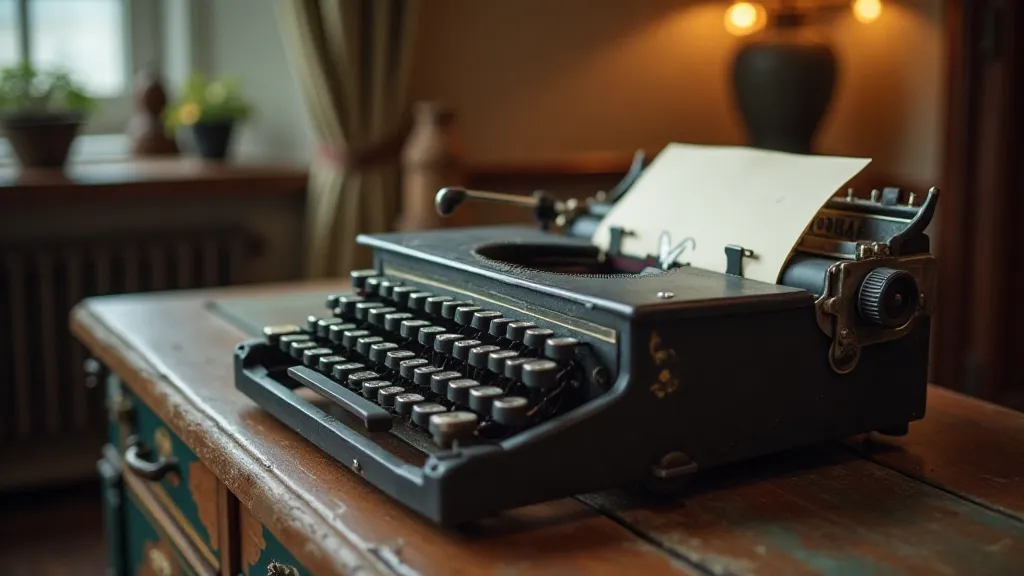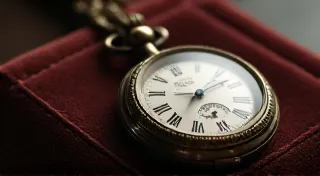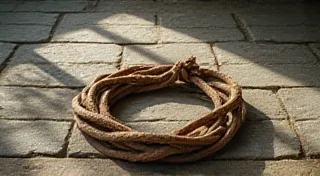The Font’s Forgotten Form: Understanding Typeface Evolution on Antique Machines
There’s a peculiar magic in holding an antique typewriter. It’s not just the weight of the metal, the satisfying clack of the keys, or the tangible connection to a bygone era. It’s the font, the very character of the text it produces, that truly captivates. The typeface on a vintage typewriter isn't just about aesthetics; it’s a fingerprint of its time, reflecting technological advancements, design trends, and the prevailing cultural sensibilities. Understanding this evolution is key to appreciating the machines we restore and collect, and understanding how the text they produced impacted the look and feel of documents.
My first experience with a truly antique typewriter wasn't a polished restoration project. It was a dusty, olive-green Remington No. 7 from the early 20th century I found in my grandfather’s attic. It was stiff, the ribbon was long gone, and the typeface seemed… unusual. It wasn’t the crisp, uniform lettering I was used to seeing on modern printers. It felt oddly organic, almost like the letters were being drawn by hand. That's when I realized – this wasn't just a machine; it was a portal to another time.
The Early Days: Cast Metal and Uniformity
The story of typewriter typefaces begins with the earliest machines in the mid-1800s. Initially, typefaces were cut directly into metal blocks – a painstaking and incredibly skilled process. These early typefaces were remarkably uniform, primarily Roman styles, dictated by the limitations of the engraving process and a desire for legibility. Think of the early Underwood models – their typefaces were blocky and robust, perfect for the business correspondence of the era. Each letter was painstakingly cast in brass and then set in a circular typewheel. The result? A consistent, though rather stark, aesthetic. The craftsmanship involved was extraordinary. Imagine the dedication required to consistently carve these intricate letters! It's a process that echoes the artistry found in other traditional crafts, where even the smallest mark reflects meticulous attention to detail. Understanding the nuances of these machines requires more than just mechanical knowledge; it demands an appreciation for the taxonomy of keys and the markings that reveal a machine’s history and origin.
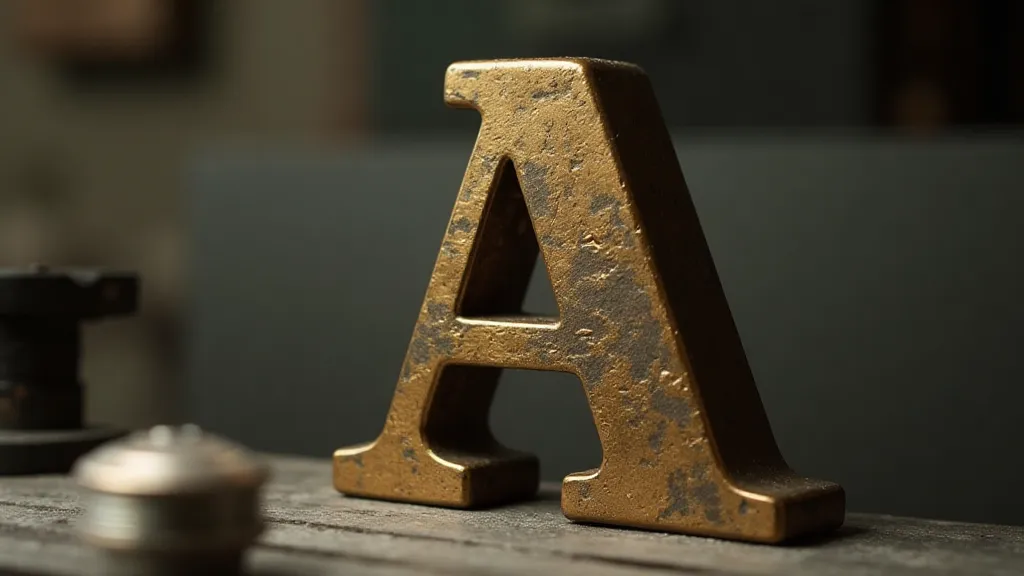
The Rise of the "Ornate" Era
The late 19th and early 20th centuries saw a shift. Typewriter manufacturers began experimenting with more decorative fonts. The Remington, Smith Corona, and Underwood machines of this period often featured faces with more flourishes—bold serifs, ornate capitals, and even slightly italicized characters. This wasn’t simply about aesthetics; it was a reflection of the prevailing artistic movements—Art Nouveau, for example—and a desire to differentiate machines in a competitive market. These faces often had a distinctive 'personality' compared to the starker earlier models. Think of the Remington “Queen” typeface - a flourish of elegance that would have graced letters of nobility. The subtle variations in the typefaces, the slight imperfections born of the engraving process, contribute to the charm of these machines.
The process of creating these typefaces remained largely unchanged – each letter was still individually cast and painstakingly fitted into the typewheel. However, the demands on the engravers were even greater. Achieving these intricate designs required an unparalleled level of precision and skill. You can almost feel the legacy of these artisans when you handle a typewriter from this period. The degradation of the typewriter ribbon over time poses a constant challenge to preservation efforts. The cartridge's lament is a familiar one to those dedicated to keeping these machines writing.
The Impact on Documents
The evolution of typefaces dramatically impacted the appearance of documents. Early typewritten letters, with their blocky and uniform lettering, conveyed a sense of formality and seriousness, perfectly suited for business correspondence and official notices. As typefaces became more ornate, documents took on a more personalized feel. A letter typed in a Queen Remington font conveyed a different impression than one typed in a standard Underwood - a sense of refinement and elegance.
The ability to create visually distinct documents opened up new possibilities for self-expression and brand identity. Businesses began to adopt specific typefaces to reflect their brand image, and individuals used them to add a personal touch to their correspondence. The typewritten word was no longer just a means of communication; it was a form of visual artistry. The restoration process itself is a testament to the dedication required to breathe new life into these machines, a veritable alchemy of restoration transforming rust and decay into a means of preserving history.
The Transition to Photo-Etching and Beyond
The mid-20th century brought another wave of change – the introduction of photo-etching. This new process allowed for more intricate and varied typefaces to be produced, albeit at the expense of the traditional hand-engraving artistry. The typefaces became more delicate and refined, mirroring the design trends of the era. While the production process became more efficient, something was lost – the tangible connection to the craftsman’s skill.
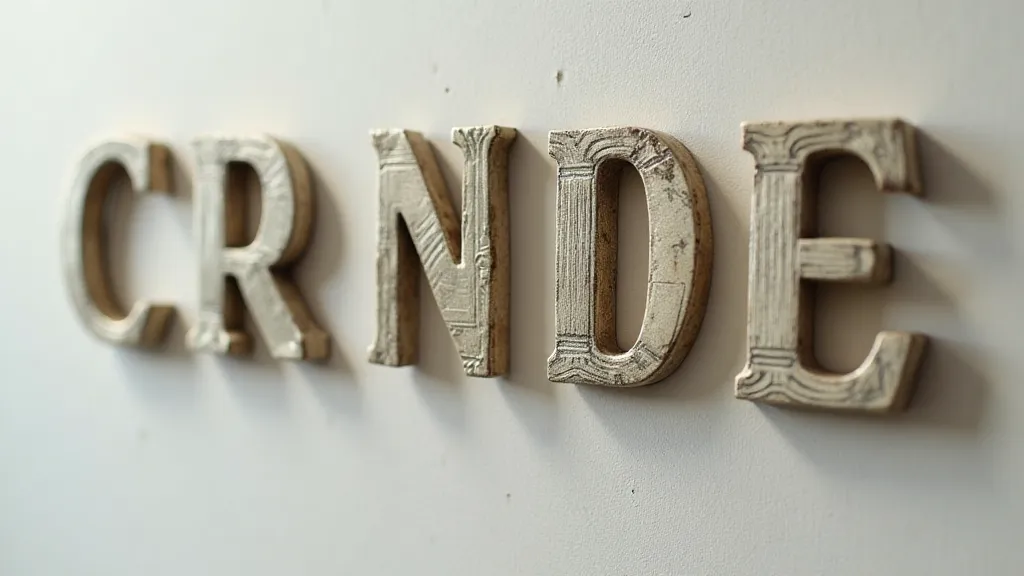
The introduction of proportional spacing further revolutionized the typewriter experience. Early typewriters used monospaced fonts, where each character occupied the same amount of horizontal space. Proportional fonts, like those used in modern printing, allowed letters to be spaced according to their actual width, creating a more natural and readable appearance. Examining the mechanisms of a vintage typewriter and identifying the stories hidden within its workings can be a moving experience. The ghost in the gears explores that sense of residual creativity often found in older machines.
Restoration Insights and Collecting Considerations
For those of us involved in typewriter restoration, understanding the typeface is crucial. Identifying the specific font used on a machine not only enhances its historical significance but also informs the restoration process. Cleaning and preserving the typeface requires a delicate touch, as the metal is often brittle and prone to damage. Trying to replicate a font perfectly, especially on older models, is often beyond our capabilities – and attempting to replace it is generally not advised. The beauty lies in the originality, the quirks and imperfections that tell a story of the machine’s past.
Collectors, too, benefit from this knowledge. A typewriter with a rare or unusual typeface can be highly prized. The “Queen” Remington, for example, is sought after by many. Knowing the production numbers, the historical context, and the unique characteristics of a particular typeface can significantly increase a typewriter's value. But beyond the monetary aspect, it’s the appreciation of the craftsmanship and the understanding of the design evolution that truly enrich the collecting experience. Furthermore, understanding the nuances of the internal workings allows for a deeper connection to the machine's history. The constant challenge of preserving ribbons and understanding their degradation is a critical aspect of maintaining the writing legacy of these machines.
The Enduring Legacy
The evolution of typewriter typefaces is a fascinating reflection of technological innovation, design trends, and cultural shifts. From the sturdy Roman fonts of the early machines to the ornate scripts of the late 19th century and the delicate designs of the mid-20th century, each typeface tells a story of its time. These machines weren’t just writing tools; they were instruments of self-expression, brand identity, and artistic creation. As we restore and collect these antique treasures, let's take a moment to appreciate the font’s forgotten form – the elegant fingerprint of a bygone era. The tangible nature of a typewriter provides a unique connection to the act of writing, something increasingly rare in our digital age. The legacy extends beyond the typeface itself; it’s about preserving the entire experience—the clack of the keys, the scent of the ink, and the satisfaction of creating something tangible.
